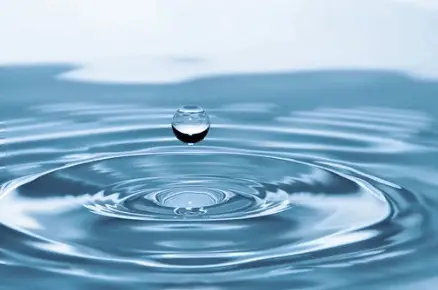
Activity of text interpretation, aimed at students in the sixth year of elementary school, about water. Water is a chemical substance. An element of nature, transparent, tasteless and odorless, composed of two gases […] Are we going to get to know this precious asset better? Do you know, for example, why sea water is salty? Find out by reading the text "What is water?" Then answer the various interpretative questions proposed!
You can download this text comprehension activity in an editable Word template, ready to print to PDF, as well as the completed activity.
Download this text interpretation exercise from:
SCHOOL: DATE:
PROF: CLASS:
NAME:
Read:
Water is a chemical substance. An element of nature, transparent, tasteless and odorless, composed of two gases: two parts hydrogen (symbol H) and one part oxygen (symbol O). Its chemical formula is H2O.
Water can be fresh or salty. Sea water is salty because rivers carry chlorine and sodium into the sea, which are released in the erosion of rocks in their beds. As rivers receive more fresh water from rain than they evaporate, their water remains fresh.
The sea is different: it loses more water through evaporation than it gains through rain. Thus, as the salt does not evaporate with water, this substance accumulates and concentrates in the sea. Repeating this phenomenon over hundreds of millions of years has increased the concentration of sodium chloride in the oceans, making them salty as they are today.
Water can be in different states: liquid, solid (ice) and gaseous (water vapour).
GARCEZ, Lucília; GARCEZ, Cristina. Water. São Paulo: Callis, 2010. P. 5. Sustainable Planet Collection.

Question 1 - Identify the purpose of the text:
( ) explain something.
( ) report a fact.
( ) defend an idea.
Question 2 - According to the text, water is “transparent, tasteless and odorless”. These expressions correspond, respectively, to the words:
( ) “tasteless”, “colorless”, “odorless”.
( ) “colorless”, “tasteless”, “odorless”.
( ) “odorless”, “colorless”, “tasteless”.
Question 3 - In “Its chemical formula is H2O.”, the pronoun that takes up “The water” indicates:
( ) place.
( ) possession.
( ) indefiniteness.
Question 4 – In “The sea water is salty because rivers carry chlorine and sodium into the sea, which are released in the erosion of rocks in their beds.”, the underlined fact:
( ) explains the previous fact.
( ) concludes the previous fact.
( ) opposes the previous fact.
Question 5 - According to the text, the salt “was accumulating and concentrating in the sea”, because:
( ) “loses more water through evaporation”.
( ) “does not evaporate with water”.
( ) “it detaches in the erosion of the rocks of its beds”.
Question 6 – In the period “As rivers receive more fresh water from rain than they evaporate, their water remains fresh.”, the word “How” was used to:
( ) point out a cause.
( ) introduce an example.
( ) establish a comparison.
Question 7 – Mark, below, the subject of the verb "increased":
“The repetition of this phenomenon for hundreds of millions of years has increased the concentration of sodium chloride […]”
Question 8 – In prayer “[…] in the oceans, making them salty as they are today.”, the highlighted term expresses in relation to the fact a circumstance of:
( ) place.
( ) mode.
( ) time.
Question 9 – The ice, according to the authors of the text, is water:
( ) in solid state.
( ) in the liquid state.
( ) in the gaseous state.
Question 10 – The word "water" is accented because:
( ) ends in “a”.
( ) ends in a vowel.
( ) ends in diphthong.
By Denyse Lage Fonseca
Graduated in Languages and specialist in distance education.
 report this ad
report this ad
